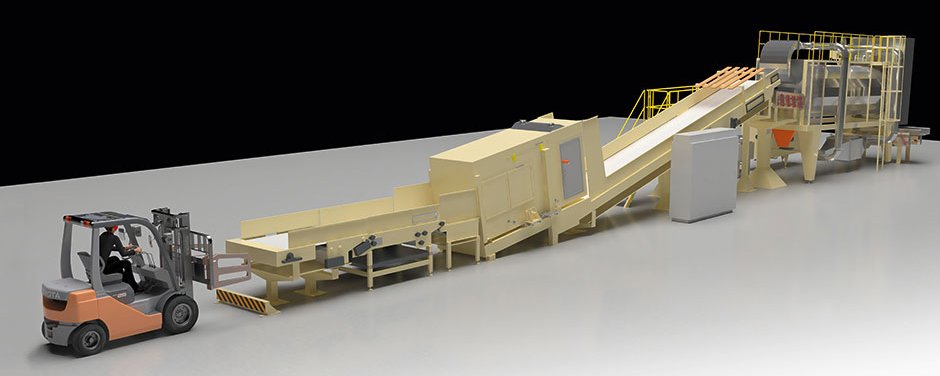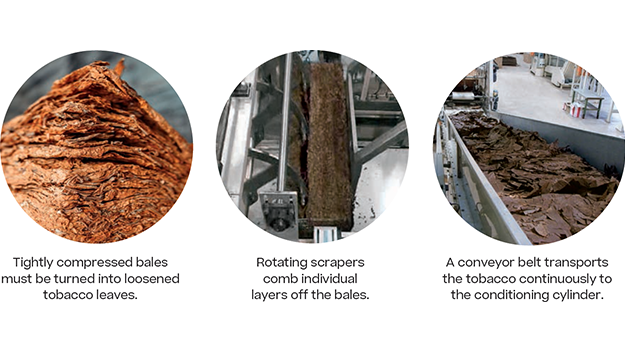Tobacco leaves enter the Primary as dry, tightly compressed 200 kg bales after being transported halfway around the world. The first task is to divide them into smaller portions. The efficiency and quality of existing methods in this process currently leave much to be desired.
Complex vacuum process
The vacuum process involves moistening the bale with steam and heating it in a sealed vacuum chamber. Although the results are very good, the process is complex and discontinuous since only one bale can be moistened in the chamber at a time. The results: fewer tobacco leaves processed per shift, considerable storage space requirements, high energy and maintenance costs.
Slicing results in lower quality
Slicing offers an alternative method. Here, the bale is cut across the leaf structure with a large knife. Unlike the vacuum chamber method, this is a continuous process. However, it is accompanied by a high degree of tobacco degradation and requires a great deal of maintenance, especially for sharpening the knives. Slicing also produces a lot of dust and thus a considerable amount of waste. To avoid this, some tobacco producers only slice the bales into two or three sections. Yet this is less effective for loosening the leaves and creates further disadvantages in subsequent steps of the process.
Uniform separation without degradation
Uniform separation without degradation The Delaminator easily masters the challenges of quality and efficiency. First, the bale with the tobacco leaves stacked flat on top of each other arrives at the conveyor belt and is tilted by 90 degrees. The tobacco leaves are now standing upright, making them easier to separate. Next, the machine pushes the compressed bale forward by a precisely defined distance. “The Delaminator has rotating scrapers that now gradually separate the layers into individual portions,” explains Helge Lampe, Sales Manager Primary. This process divides each bale into about eight portions. The tobacco leaves are handled so gently that hardly any dust is produced and the valuable raw material can be used optimally.
The portions then slide onto a conveyor belt and are automatically weighed. The speed of the belt can be controlled so that it continuously feeds the next step in the process – the conditioning cylinder – thus ensuring exceptional efficiency. “The Delaminator offers our customers a number of benefits and is already in use in numerous production facilities,” says Lampe. Just a few weeks ago, the world‘s largest tobacco factory in Yuxi, China, ordered several lines.




